The European Union (excluding the UK) is the third largest ecommerce market in the world, with total online retail sales of $498 billion annually.
Amazon and eBay lead the market in continental Europe, as they do in the US and UK. Looking past them, there is a huge range of European online marketplaces. But while Amazon and eBay sell across Europe as a whole, most of the domestic marketplaces focus on just one country, or a small number of closely connected countries.
It seems that when it comes to ecommerce, much of the market in Europe is divided along old geographic and linguistic lines, despite a single currency, open borders and thousands of shared regulations.
Those differences extend to the overall take-up of online shopping in Europe as well. For Europe as a whole, online retail has a 16.2% share of total retail. In Germany the figure is 19.9%, while in Italy it is only 6% – less than a third of Germany’s share. Online shopping has taken off in some European countries, but differences in payment systems, delivery networks, culture and language mean that others lag far behind.
| Our tip: Keep track of your business numbers with ease. Accounting is important, especially when you’re selling in different countries. Freshbooks helps you track expenses, customize invoices, run reports, and everything else all from one place. You can try Freshbooks for free for 30 days. Sign-up today! |
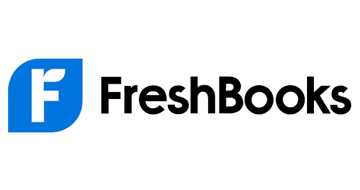
Try Freshbooks 30 days free trial Now !
The largest online marketplaces in Europe
| # | Type | Name | Region/Country | Product Category | European Visits/month |
|---|---|---|---|---|---|
| 1 | Amazon | Global | General | 980.9M | |
| 2 | eBay | Global | General | 366.9M | |
| 3 | Allegro | Poland | General | 184.8M | |
| 4 | Wildberries | Russia | General | 149.9M | |
| 5 | Zalando | Europe | Fashion | 127.1M | |
| 6 | Ozon | Russia | General | 86.2M | |
| 7 | bol.com | Netherlands | General | 78.8M | |
| 8 | OTTO | Germany | General | 55.0M | |
| 9 | Cdiscount.com | France | General | 50.5M | |
| 10 | ManoMano | Europe | Homewares | 44.2M | |
| 11 | eMAG | Eastern Europe | General | 43.5M | |
| 12 | Fnac | France | General | 36.2M | |
| 13 | Etsy | Global | Arts, Crafts & Gifts | 23.1M |
All visit data in this article for Europe excludes the UK. For online marketplaces in the UK see Online Marketplaces in the UK: Amazon and eBay Dominate.
Also see our Casio Calculator Online to maximize your profits.
First we will look at the online marketplaces with more than 20 million visits per month from within Europe.
Amazon is the leading online marketplace, with just under one billion visits per month. Europe and the US are similar in size in terms of both GDP and population, but Amazon in the US has more than double the traffic of Amazon in Europe – around two billion visits per month. This reflects Amazon’s larger share of the US ecommerce market, and more competition online within Europe.
eBay is the second largest online marketplace in Europe, but with only 37% of Amazon’s European traffic. Despite early popularity in Europe, eBay is significantly behind Amazon in every major country.
The first surprise in the list, for those not familiar with European ecommerce, is Polish marketplace Allegro. Poland is now a developed economy, following rapid growth over the last thirty years. Allegro has grown with it, and now has 185 million visits per month, 96% of which come from Poland.
Next is Russian retailer and marketplace Wildberries, with 150 million visits per month from within Europe, 92% of which are from Russia. Wildberries launched in the US in May this year, and has 13 other localized versions of its website, but it is yet to make a significant impact outside Russia and a handful of neighboring countries.
Fifth is Zalando, the only large pan-European marketplace other than Amazon and eBay. Zalando is a German company, but has meaningful traffic from Italy, France, Netherlands, Poland and other countries, as well as Germany.
Most of the remaining companies with more than 20 million visits per month in Europe are heavily weighted towards single countries, or at most two to three countries with close geographical and historical ties. First, Ozon gets 95% of its traffic from Russia. bol.com is focused on the Netherlands and Belgium. Otto is a German retailer and online marketplace, while Ciscount.com is a French company and sells mainly to consumers in France. eMAG is focused on Eastern Europe, particularly Romania, and Fnac is another French retailer.
Homewares marketplace ManoMano is an exception to the above, with cross-European traffic from countries including France, Italy, Spain, Germany and the UK. Etsy also generates its sales from across Europe.
It is perhaps ironic that two American companies lead ecommerce in Europe and, while they are certainly stronger in some countries than others, they basically sell across the whole continent. Almost all of the large domestic European online marketplaces focus on their own country, sometimes along with one or two neighboring countries, despite being part of the most closely integrated economic bloc in the world.
| Our tip: Regardless of everything, you need to stay organized to grow your eCommerce business. The traditional way of managing your work with emails and spreadsheets is no longer enough. You need something that can grow with your business. Monday.com is the CRM solution for online sellers that helps you get more done in less time. The customizable workflows make it easy to create and manage tasks, projects, and appointments for your team. Try monday.com free forever plan to see what it can do for your business. |
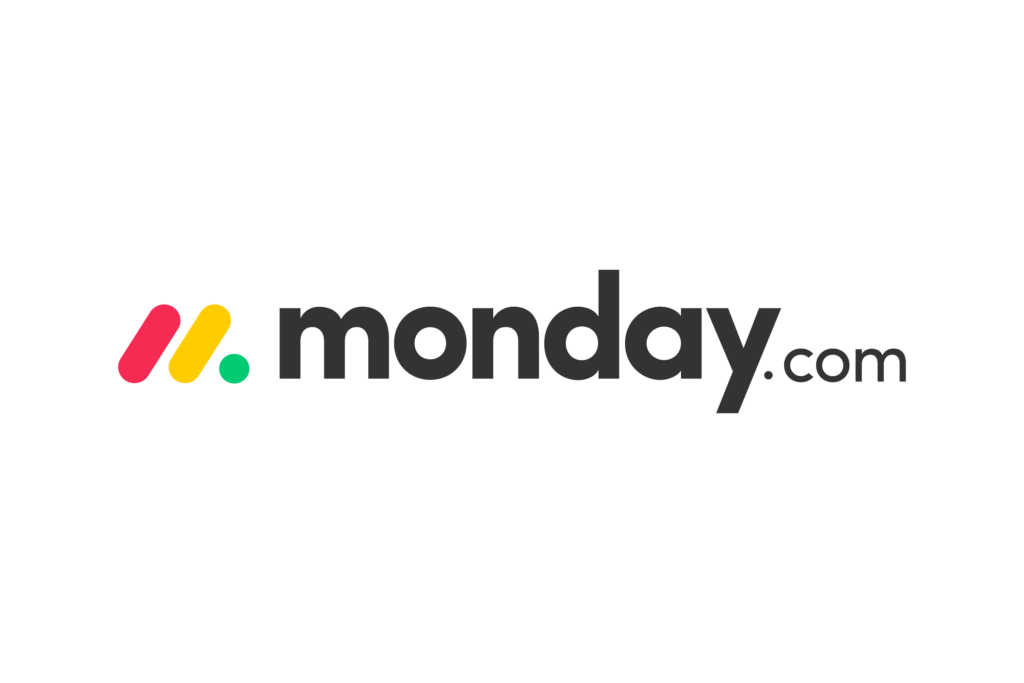
Try Monday.com for free today!
Amazon in Europe

| # | Country | Visits/month | % of Total |
|---|---|---|---|
| 1 | 2.0B | 38% | |
| 2 | 555.8M | 11% | |
| 3 | 407.0M | 8% | |
| 4 | 385.6M | 7% | |
| 5 | 295.8M | 6% | |
| Others | 1.6B | 30% |
Amazon launched in Germany and the UK in 1998. It followed with France in 2000, then Italy much later in 2010 and Spain in 2011. The most recent European websites to launch were the Netherlands and Sweden in 2020. There are rumors about expansion to Switzerland.
Amazon has 981 million monthly visits from Europe (excluding the UK), representing 19% of its total traffic, compared to 38% for the US. It’s important to note that although Amazon only has dedicated websites in seven European countries, it does sell across the whole of Europe. Amazon Germany, in particular, is well used by shoppers in Austria, Switzerland, the Netherlands and Eastern Europe. Belgian consumers shop from Amazon France, and Irish shoppers are heavy users of Amazon.co.uk, although that may change with Brexit now in effect.
Amazon has over 50 fulfillment centers in continental Europe, including nine across Poland and the Czech Republic – countries where it has no domestic website. Initiatives like Prime, Prime Now and Amazon Business have all launched on Amazon’s European websites. Next-day delivery has long been the norm for Amazon Prime in Europe, with its higher population density making this much easier to achieve than in the US.
FBA is particularly well developed in Europe, with a number of unique programs for distributing inventory across the region including European Fulfillment Network (EFN), Multi Country Inventory (MCI), Central European FBA and Pan-European FBA.
Amazon has a unified seller registration system for its European marketplaces, meaning that a single account can be used to sell across all the websites. Amazon is the leading marketplace in Germany, France, Switzerland, Italy, Spain and the UK, making it the obvious choice for businesses looking to expand to Europe’s largest economies.
| Our tip: Do you have a great business idea, but you don’t know how to get started selling online? Helium 10. With Helium 10, you can find all the information needed to make data driven decisions. The platform is packed with features that help you find new customers, drive sales, and manage your day-to-day operations. So whether you’re just getting started or you’ve been in business for years, Helium 10 has everything you need to take your business to the next level. You can get 20% discount on Helium 10 with the following promo code: WEBRETAILR20 |
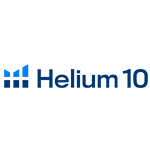
Get 20% discount on Helium 10 from us
eBay in Europe
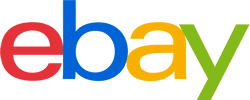
| # | Country | Visits/month | % of Total |
|---|---|---|---|
| 1 | 688.9M | 41% | |
| 2 | 297.9M | 18% | |
| 3 | 197.5M | 12% | |
| 4 | 69.6M | 4% | |
| 5 | 61.3M | 4% | |
| 6 | 44.6M | 3% | |
| Others | 332.3M | 18% |
eBay started its global expansion in 1999, with sites in Germany, Australia and the UK. As a pure online marketplace with no need for physical warehouses, eBay has been able to grow internationally with comparative ease.
Within Europe today (excluding the UK), eBay has fourteen localized websites and 367 million monthly visits, representing 22% of its overall traffic, compared to 41% for the US. Besides the UK, which is eBay’s second largest market, eBay is particularly strong in Germany.
eBay has a global account system, meaning that selling works the same way in every country and sellers have a consistent feedback profile worldwide. This does not mean, however, that listings from one eBay site automatically show in the standard search results worldwide. Success with cross-border selling on eBay usually requires separate translated listings for each country.
Sellers can ship international orders directly, or use eBay’s Global Shipping Program (GSP) which allows them to ship orders to a warehouse in their own country for onward delivery to the buyer. eBay calculates the cost of international shipping, taxes and duties and charges the buyer separately, so the order can be treated as an ordinary domestic purchase by the seller. GSP charges can be very expensive, so it is not always liked by buyers.
eBay should be taken seriously by businesses looking to expand into Europe, particularly those who have identified market opportunities in Germany and the UK.
| Our tip: Do you have a great business idea, but you don’t know how to get started selling online? 3Dsellers. With 3Dseller, you can find an all-in-one solution that will offer you a full range of automated tools for eBay. The platform is packed with features that help you research potential, monitor and manage your business, and finally develop everything concerning your business. So whether you’re just getting started or you’ve been in business for years, 3Dseller has everything you need to take your business to the next level. Get 7 days free trial to find out more about 3Dseller capabilities. |
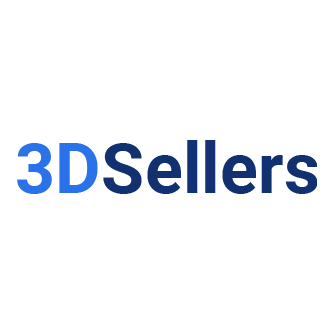
Get 7 days free and explore the capabilities of 3DSELLER!
Allegro in Poland
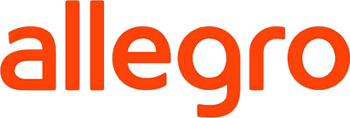
| # | Country | Visits/month | % of Total |
|---|---|---|---|
| 1 | 182.9M | 96% | |
| 2 | 1.5M | 1% | |
| Others | 5.8M | 3% |
Allegro is effectively a single-country marketplace, with 96% of its traffic coming from Poland. Poland has a relatively small population of 38 million people, and only recently became a developed economy, but Allegro has 20 million customers and 185 million visits per month. This makes it the third largest marketplace in Europe.
Allegro was founded in 1999, and has been bought and sold by a succession of internet groups over the last twenty years. It is majority owned by a consortium of investor funds and in October 2020, Allegro announced an IPO of its shares on the Luxembourg Stock Exchange.
Following the eBay model, Allegro is a pure-play online marketplace and does not sell products itself. Today, it has 125,000 sellers and 200 million offers listed. It is the twelfth largest online marketplace in the world. In terms of pure-play (non-retailer) online marketplaces focusing on a single country, only Rakuten, Taobao, Pinduoduo and Trendyol are larger, and they are based in the much larger Asian countries of Japan, China and Turkey. Allegro is truly a phenomenon.
The Allegro marketplace covers everything from electronics, fashion and groceries to vehicles, art and industrial products. A loyalty program called Allegro Smart! encourages repeat purchases. Financing is available to buyers and a number of shopping festivals (like Amazon’s Prime Day) are run during the year.
Allegro has a self-service registration process, but requires the upload of company registration documents for foreign businesses. As a highly competitive marketplace, sellers will need to compete on price and shipping speed, unless they have unique products with strong demand from Polish consumers.
Zalando in Europe

| # | Country | Visits/month | % of Total |
|---|---|---|---|
| 1 | 25.2M | 19% | |
| 2 | 14.8M | 11% | |
| 3 | 13.7M | 10% | |
| 4 | 13.5M | 10% | |
| 5 | 13.5M | 10% | |
| 6 | 9.0M | 7% | |
| 7 | 7.6M | 6% | |
| Others | 37.5M | 27% |
Zalando was founded in 2008 in Berlin, Germany, and now sells fashion and lifestyle products across Europe. It has 127 million monthly visits globally, 94% of which are from developed European countries (excluding the UK) such as Germany, Italy, Poland, Belgium, Denmark, Austria, Norway and many others.
Zalando began as a retailer selling products in its own right, but since 2013 it has followed the Chinese model to become a marketplace where other brands and retailers can sell directly to consumers as well. Like Amazon, Zalando has prioritized logistics and market share above profitability with 2019 revenue of €8 billion and a profit margin of 5.3%. It has six warehouses across Germany and Poland.
Businesses can sell on Zalando through its Partner Program. This has strict application criteria including having an existing online presence and an Instagram profile. Sellers must offer free delivery and returns, and accept returns for 100 days from purchase.
Zalando continues to innovate, collaborating with physical retailers, expanding to additional countries, adding new categories and opening its own outlet stores.
As a pan-European fashion retailer that continues to grow quickly, Zalando is an attractive marketplace for established brands selling clothing, shoes, accessories, sports and beauty products.
Ozon in Russia

| # | Country | Visits/month | % of Total |
|---|---|---|---|
| 1 | 83.7M | 94% | |
| 2 | 1.4M | 2% | |
| 3 | 1.2M | 1% | |
| Others | 2.7M | 3% |
Ozon was founded in 1998 as an online bookstore, quickly expanding into CDs and DVDs and later adding clothing, electronics and other product categories. Although Ozon had an early start in ecommerce, it has been relatively slow to expand compared to the other marketplaces listed in this article, due to the slow take up of online shopping in Russia.
Russia has a large population and 100 million internet users. Annual online sales are estimated at $24 billion, making Russia the twelfth largest ecommerce market in the world. However, online retail accounts for a small proportion of total retail sales, largely due to a lack of trust in online payments, delivery services and even the retailers themselves.
In recent years, attitudes to ecommerce have started to change. Ozon has benefited from this, with GMV increasing to $2.7 billion in 2020. Russia’s enormous size, 11 different time zones, and variable logistics are further challenges to the adoption of online shopping, but a young population and lockdown measures may be enough to overcome these barriers. Ozon now has 14 million active buyers, 86 million monthly visits, and approximately 45,000 sellers.
Selling to Russia will be a daunting prospect for many businesses, but Ozon has a cross-border program which aims to make the process straightforward. Sellers can ship directly to Russian buyers and receive payment in US dollars or euros, with English-speaking support from Ozon and no VAT obligations.
Bol.com in Netherlands & Belgium

| # | Country | Visits/month | % of Total |
|---|---|---|---|
| 1 | 57.9M | 72% | |
| 2 | 20.7M | 26% | |
| Others | 2.1M | 2% |
Bol.com was founded in 1999 by German media company Bertelsmann and, like Allegro, has had a number of different owners over the years. It was acquired by Dutch-Belgian supermarket chain Ahold Delhaize in 2012, and has remained part of the group since then. Bol.com began as a retailer selling its own products, then added an online marketplace in 2011.
Bol.com is effectively a two-country marketplace, with 98% of its users based in the Netherlands and Belgium. Although the combined population of these countries is only 29 million people, bol.com receives 79 million visits per month from 11 million active customers. Although the Netherlands and Belgium are small countries, they are wealthy countries with a high adoption of online shopping.
Bol.com says that 41,000 entrepreneurs have sold through the website, and millions of items are available to buy from categories including books, music, electronics, toys, fashion, DIY and auto parts. It is a catalog-driven marketplace so sellers only need to provide a UPC and their offer price, if items are already in the catalog. There are no monthly fees, but only a commission for products that sell.
Businesses need a company registered in the Netherlands or Belgium to sell on bol.com, but there are service providers that can help sellers get registered without this. Bol.com has its own fulfillment network that sellers can use in the same way as Amazon FBA.
eMAG in Eastern Europe

| # | Country | Visits/month | % of Total |
|---|---|---|---|
| 1 | 30.5M | 67% | |
| 2 | 7.5M | 17% | |
| 3 | 5.0M | 11% | |
| Others | 2.4M | 5% |
eMAG was founded in 2001, as an online store selling computers and office products in Romania. It expanded into Bulgaria in 2012 and Hungary in 2013, quickly gaining market share. It is the eleventh largest marketplace in Europe this year.
Today, eMAG sells products of all types, including electronics, appliances, groceries, fashion, DIY, toys and more. It has 30.5 million monthly visits from its home market of Romania and over 5 million from each of Hungary and Bulgaria. With a combined population of only 36 million, eMAG dominates ecommerce in these countries.
eMAG’s marketplace has over 23,000 sellers and 11 million products listed. Seller registration is free and international businesses are accepted. There is a vetting process for new sellers and new product listings.
Like other marketplaces, eMAG tracks seller performance and provides KPI reports each month. An optional Account Partners program provides selling advice for approximately $50 per month.
Also see our new business calculators page.
Other online marketplaces in Europe
The online marketplaces above are the largest in Europe, but there are many others with over five million monthly visits from European countries.
| # | Type | Name | Region/Country | Product Category | European Visits/month |
|---|---|---|---|---|---|
| 14 | Kaufland | Germany | General | 19.2M | |
| 15 | Wish | Global | General | 18.2M | |
| 16 | La Redoute | France | General | 16.9M | |
| 17 | Rue du Commerce | France | General | 16.3M | |
| 18 | Darty | France | General | 15.2M | |
| 19 | Lamoda | Russia | Fashion | 13.9M | |
| 20 | Conforama | Europe | Homewares | 12.1M | |
| 21 | Worten | Europe | General | 10.0M | |
| 22 | Spartoo | Europe | Fashion | 8.9M | |
| 23 | digitec | Switzerland | Electronics | 8.8M | |
| 24 | Wayfair | North America, Europe | Homewares | 8.3M | |
| 25 | Wehkamp | Netherlands | General | 8.2M | |
| 26 | Fruugo | Global | General | 6.8M | |
| 27 | Aukro | Czech Republic | General | 6.6M | |
| 28 | cdon | Scandinavia | General | 6.3M | |
| 29 | Joom | Europe | General | 6.0M |
All visit data in this article for Europe excludes the UK. For online marketplaces in the UK see Online Marketplaces in the UK: Amazon and eBay Dominate.
Cross-European online marketplaces

As mentioned earlier, domestic European marketplaces mostly sell within their home markets, and sometimes to a few neighboring countries. However, there are two European marketplaces (in addition to Zalando) with significant sales across several EU countries, and three further US marketplaces that sell across Europe.
French marketplace ManoMano, listed in the first table, sells homewares to shoppers in France, Italy, Spain and Germany with a total of 44 million European monthly visits. France is the largest of these, representing 45% of ManoMano‘s total traffic, with Italy on 21% and Spain on 13%.
Spartoo, also a French company, sells clothing, shoes and accessories to France, Spain, Italy, Portugal, the Netherlands, Greece and the Czech Republic, with 8.9 million European monthly visits in total. Again, France is the largest with 38% of Spartoo’s overall traffic with the remainder spread broadly across Europe.
Finally, US marketplaces Etsy, Wish and Wayfair have a strong presence in Europe. Handmade marketplace Etsy has a total of 23 million monthly visits, impulse-buying marketplace Wish has 18 million and homewares sellers Wayfair has 8 million.
Online marketplaces in France

In France, Amazon has the largest online retail market share. But after Amazon, France has the most diverse online marketplaces of any European country.
Many of these are owned, or have been owned, by large retail chains including Casino Group, Fnac Darty, Carrefour, Conforama and Galeries Lafayette. This is in contrast to the more often independent or privately-backed ecommerce companies in the US.
Cdiscount.com is the second largest online marketplace in France with 50.5 million monthly visits from the country. Cdiscount.com sells a wide range of products and 92% of its traffic is from France. As one of the largest online marketplaces in Europe, Cdiscount.com is listed in the first table above.
Fnac has the fourth largest online marketplace in France, behind eBay, with 26 million monthly visits representing 65% of its overall traffic. Like Cdiscount.com, Fnac sells a wide range of products.
Rue du Commerce is another generalist marketplace in France with 16 million monthly visits from the country, which is 96% of its global traffic.
Darty is part of the same retail group as Fnac, and has 15 million monthly visits per month from France, representing 95% of its total traffic. It also sells general merchandise. The two marketplaces have separate seller registration systems.
La Redoute sells a wide range of products, specializing in fashion and homewares. It has 17 million monthly visits from France, representing 97% of its total traffic.
Conforama sells homewares and has 8 million monthly visits from within France, making up 65% of its global traffic.
Online marketplaces in Germany

Amazon is the leading marketplace for Europe’s largest economy, Germany.
Besides Zalando, only two other German online marketplaces have more than five million monthly visits from within the country.
Otto has 97% of its traffic from within Germany, amounting to 54 million visits per month. It is part of a large conglomerate and offers a range of products sold both by itself and by marketplace sellers. Otto is one of the largest marketplaces in Europe and is listed in the first table above.
Kaufland (formerly Real.de) has 19 million visits per month from Germany, representing 93% of its overall traffic. It is a retailer and online marketplace, selling a wide range of merchandise.
Other online marketplaces in Europe

Russian fashion retailer and marketplace lamoda has 14 million monthly visits, from Russia, Belarus, Ukraine and Kazakhstan. It is owned by Global Fashion Group, which owns a number of fashion ecommerce companies around the world.
cdon operates across Scandinavia. It has 6.3 million monthly visits in total, with 57% of its traffic from Sweden, 19% from Norway, 11% from Finland, and 10% from Denmark. It is a retailer and a marketplace, selling a wide range of products including electronics and video games.
Worten is a Portuguese electronics retail chain which also sells online and operates a marketplace. The website has 10 million visits per month, 76% of which are from Portugal and 18% from Spain.
Digitec is an independent Swiss ecommerce company, focusing on electronics and computing. It is a retailer and a marketplace, with nine million monthly visits and 94% of its traffic from Switzerland.
Wehkamp has eight million visits per month from the Netherlands, representing 97% of its overall traffic. It is a marketplace for general merchandise.
Aukro is the Czech Republic’s version of Allegro, and was originally part of the Allegro group but is now a separate company. It is a pure-play online marketplace, with 6.6 million visits per month, 94% of which are from the Czech Republic.
Joom is an online marketplace established in 2016, selling a wide range of products to shoppers in Russia and around the world. It has six million visits per month, 32% of which are from Russia. Joom mainly sells products directly from China, in a similar way to AliExpress and Wish.
About the data
This article covers online marketplaces (either pure-play marketplaces or retailers with a third-party marketplace) with more than five million monthly visits from within Europe (excluding the UK), based on data from SimilarWeb. A global list of online marketplaces, based on the same data, is available in The World’s Top Online Marketplaces.
We have excluded online retailers whose marketplace forms a very small part of their overall business, as well as marketplaces with a consumer-to-consumer model, and marketplaces with a very narrow product niche.
Leave a Reply